
From It’s Going Down
Welcome, to This Is America, March 25th, 2022.
On today’s episode, first we speak with someone involved in a recent occupation at a university in so-called Montreal.
The interview starts around 06:15

From It’s Going Down
Welcome, to This Is America, March 25th, 2022.
On today’s episode, first we speak with someone involved in a recent occupation at a university in so-called Montreal.
The interview starts around 06:15
From subMedia
Early on the evening of Tuesday March 15, anarchists and anti-authoritarians converged in the historic working-class neighbourhood of St-Henri, Montreal, for the 26th annual International Day Against Police Brutality. This year, in addition to venting their hatred of the SPVM (the Montreal police), a central theme of the march was the colonial repression faced by Wet’suwet’en land defenders and their supporters at the hands of the RCMP.
#ACAB #1312 #FTP

From the Collective Opposed to Police Brutality
The evening of March 15th, was the 26th annual protest against police brutality. 26 years of marching, 26 years of systematic repression by police brutality, like an annual tradition that leaves a bad taste in everyone’s mouth. The demonstrators decided to keep control of the sidewalks rather than be chased off the streets by violent and insulting police officers, and attacked the neighborhood’s worst businesses: Dollarama and the National Bank. Let’s remember that if Dollarama is a grocery store of last resort for the poor, it still sells unhealthy crap and is one of the worst companies in Quebec for abusing its workers. And on the other side, the National Bank is investing billions in several important oil projects. In the face of this self-defense of the poor against their oppressors, the police violently attacked the demonstration: truncheons, gas and beatings were the order of the day.
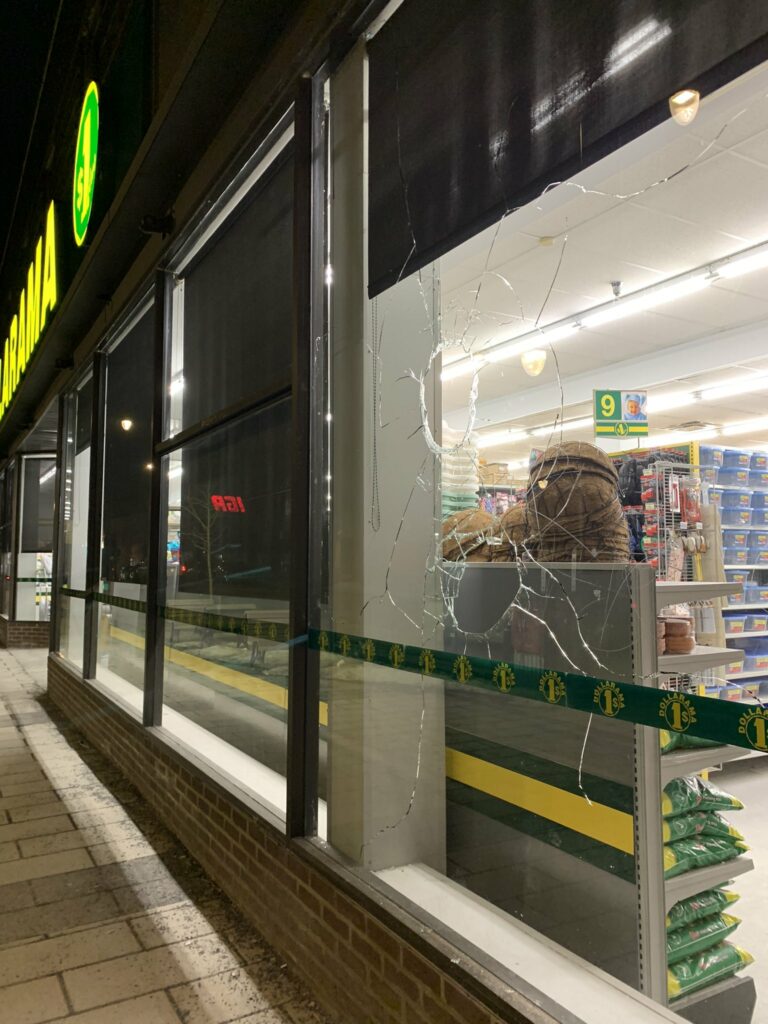
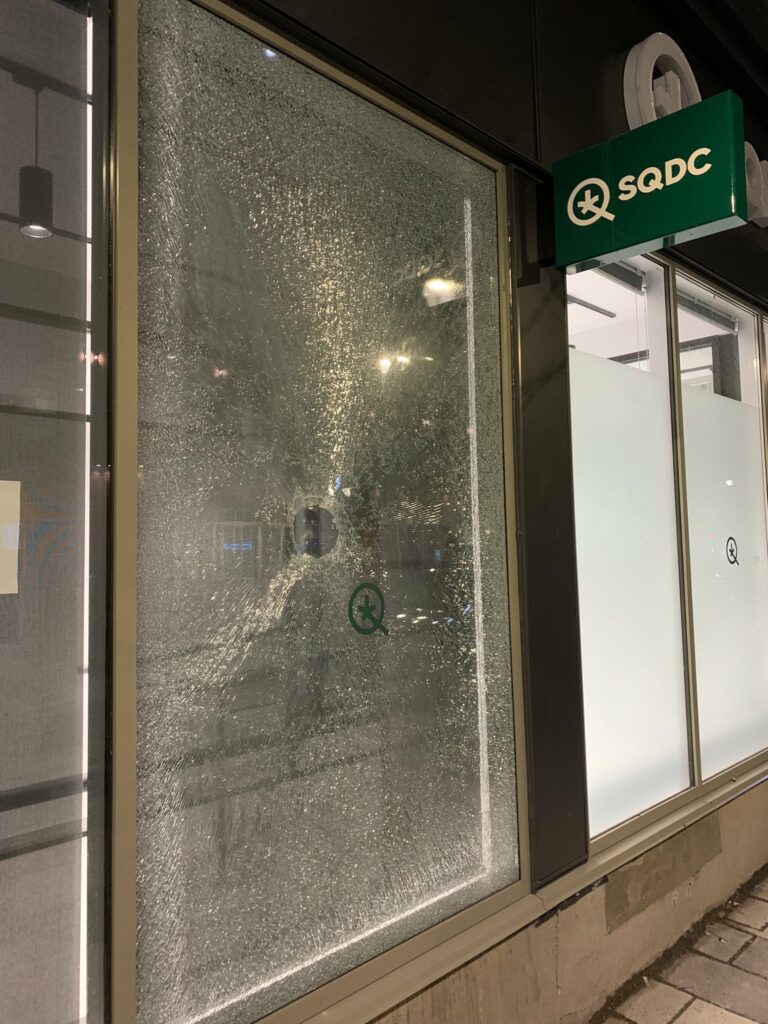
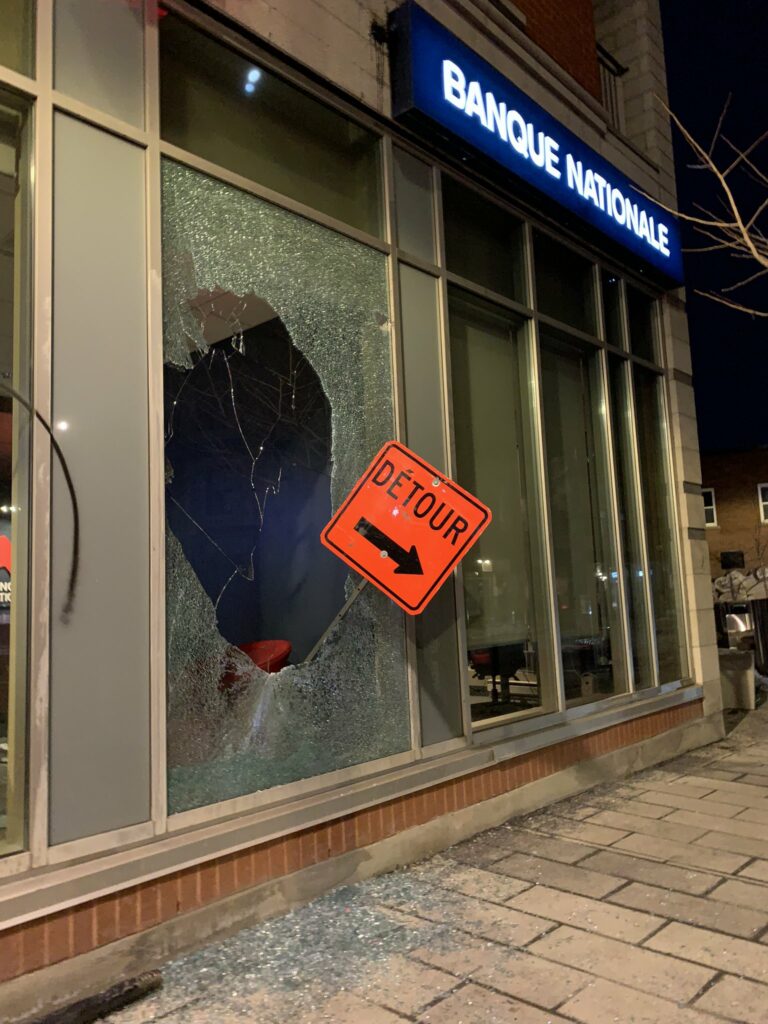
We demonstrated in St-Henri, a poor, working class neighborhood that is increasingly being slaughtered by gentrification, like many others across the city. The arrival of new, hip businesses has driven out the old, affordable spaces, and rents are now skyrocketing. But St-Henri is also this high place of colonialism, close to the railroads, the Lachine Canal … in short, everything that is used to plunder indigenous lands. The workers of St-Henri know this well, they have worked for a long time in the sweatshops of the area to transform this plunder into junk too expensive for them. And if most of the sweatshops are gone, the looting is still going on, whether it is through the construction of condos in Kanien’kehá:ka territory, or the construction of a pipeline in Wet’suwet’en territory, or ancient wood cutting in Pacheedaht territory.
We must indeed shutdown the colonial police. It’s colonial, because that’s what the police are for, to defend the settlers. It is the armed arm of the israeli state that defends the settlers in Palestine. It is the armed wing of saudi arabia that is invading yemen. And it is the armed wing of russia which is invading ukraine. And while canada supports ukraine — and that’s good — it doesn’t hesitate to give weapons to the strongarm of repression, both in israel and in saudi arabia. And canada is arming its own RCMP, its colonial police force, to intervene on unceded indigenous lands, whether it be Wet’suwet’en land or the Pacheedaht land.
We have nothing to lose but our chains. All attacks on the State and Capital are justified.
Finally, we are calling for witnesses: if you have been arrested, brutalized or have witnessed police brutality, please contact the COBP at: cobp@riseup.net
We also remind you to be careful about what you post on social media.
* We thank André Querry for the photos
The COBP


From CrimethInc.
The following call to action originally appeared in Russian on avtonom.org, the platform that emerged from the Russia-wide anarchist network Autonomous Action.
Our Russian colleagues report that, under a new law introduced this week, those who are found guilty of spreading misinformation about the invasion of Ukraine can be sentenced to years in prison. This apparently includes those who simply refer to the invasion as a “war,” rather than a “special operation,” as Putin’s government has insisted on doing. In this context, demonstrators show tremendous courage taking to the streets.
The next mass day of protest is scheduled for this Sunday, March 6. We hope their efforts will be echoed by demonstrators around the world, placing pressure from all directions on the Russian government, the global capitalist class, military profiteers, and all the other forces that are abetting the invasion.
To support political prisoners in Russia, donate to the Anarchist Black Cross in Moscow here. To support anarchists in Ukraine, donate here or here. There is also a solidarity structure to support refugees fleeing from Ukraine.


The Russian army has invaded Ukraine. Putin has lost his senses and his army is bombing cities, shooting civilians, and killing children. More than one million people have fled the country in order to escape from Putin’s “liberators.”
We refuse to submit to Russian military censorship. We say openly and clearly: this is war. This is a war of conquest and the Russian army is running it. With weapons in their hands, Ukrainians are successfully defending themselves from the invaders, but we, who are inside Russia, cannot stand aside from these events. We must show each other and the world that we are against this war, that only Putin and his gang need it. To be against the war is genuine anti-fascism right now.
March 6, this coming Sunday, is the general day of anti-war actions in Russia. Take the central square of your city! One of the meeting points in Moscow is the Square of the train stations at 15:00. There are also meetings at 19:00 and other times. Decide and organize for yourselves, team up with your friends. The main thing is to get out on the streets.
The Russian authorities are panicking now. They have realized that they are losing this war. That is why they hysterically threaten anti-war protesters—with expulsion, or with dismissal, or with immediate conscription into the army, or with jail. Don’t be afraid of them. Ukrainians in their cities go out into the streets with bare hands to protest against the invaders. They are standing against solders with riffles, against tanks. How can one be afraid of the rusty machinery of the Russian police?
We demand an immediate end to the war. We demand the immediate and unconditional withdrawal of Russian troops from Ukraine. This is the main condition for any further action: the aggression of the Russian Federation must stop. We must stop the slaughter of people. Yes, Putin didn’t ask us when he planned the invasion—but we didn’t stop him in time. So it is important to do it at least now.
Of course, our main goal now is to stop the war in Ukraine. But we have to fight for the future of Russia, as well. There isn’t much time left for this deranged dictator. His small victorious war didn’t go according to the plan and now his removal is only a matter of time and concrete means. But what happens next, after Putin?
The lands of the “Russian Federation” are now at a historical crossroads. The collapse of Putin’s regime may trigger the process of liberation. Sure, they won’t lead to anarchist ideals immediately—but at least Russia will no longer be at war with the rest of the world and with its own population. In this wave of changes, there will be opportunities for serious changes in the political system towards greater decentralization—for example, the complete abolition of the presidency and the transition to a parliamentary republic, which we have been talking about for a long time.
However, there’s another possibility for “what comes next” after Putin: the regime transforming into a pupal stage, into an even more authoritarian regime—the complete closure of all borders and the cessation of international contacts. Blocking half of the Internet in Russia tonight is only the first sign. There will no longer be any forces left for aggressive wars, but this will not make it easier for the inhabitants: they will find themselves in a state reminiscent of North Korea. And there is absolutely no anarchist movement in North Korea. None.

Now, in the coming days and weeks, we all have a unique window of opportunity. Putin’s authoritarian regime has made a fatal mistake and is reeling. If the psychopath in the Kremlin does not press the nuclear button, he will not live long. And now everything depends on us, the inhabitants of Russia. If we remain silent, then the agenda will quickly be hijacked by isolationists and conservatives, who are in the majority in the upper levels of power. But if we are active, we will win. A rusted leviathan needs only to be pushed and it will crumble into dust.
Take the streets on March 6. If you can’t go out on March 6, go out on other days. If you can’t go out at all, protest against the war in other ways: distribute leaflets and posters, stick up stickers, write “no war” on medical masks, hang posters from balconies. Finally, talk to people. This is now more important than studies, more important than work, more important than anything else in the world. Now the fate of not only Ukraine, but also Russia is being decided. Our future is being determined—and only we will be responsible for what it will be.
Winter is ending. Spring is coming.




Anonymous submission to MTL Counter-info
Around dinner time on the night of February 23rd, two dozen anticolonial militants paid a surprise visit to RBC Quebec president Nadine Renaud-Tinker, at her 734 Upper Lansdowne avenue Westmount home. While Indigenous land defenders and settler accomplices resist wave after wave of colonial assaults to defend the Wet’suwet’en Yintah and the Wedzin Kwa river, investors like RBC comfortably profit off of the ongoing genocide of First Peoples and the destruction of unceded land for capitalist extractivist projects. Let’s remember that the Royal Bank of KKKanada leads a group of 27 banks providing the 6.8 billion dollars needed to build the Coastal GasLink Pipeline. It has, since 2016, contributed more than 200 billion dollars to the fossil fuel industry.
Though it is neither possible nor desirable to recreate the cruelty financed by president Renaud-Tinker on Wet’suwet’en land, militants wished for her to also experience the feeling of seeing unwelcomed visitors at her doorstep. They stayed for more than an hour, chanting slogans and dancing to music. The energy was high and comrades didn’t shy away from expressing their dissatisfaction, before leaving safely.
Following the recent sabotage of a Coastal GasLink drill site, increased RCMP repression and surveillance is already being deployed on Wet’suwet’en territory, and our solidarity is more important than ever! Stay tuned, the fight continues! #AllOutForWedzinKwa
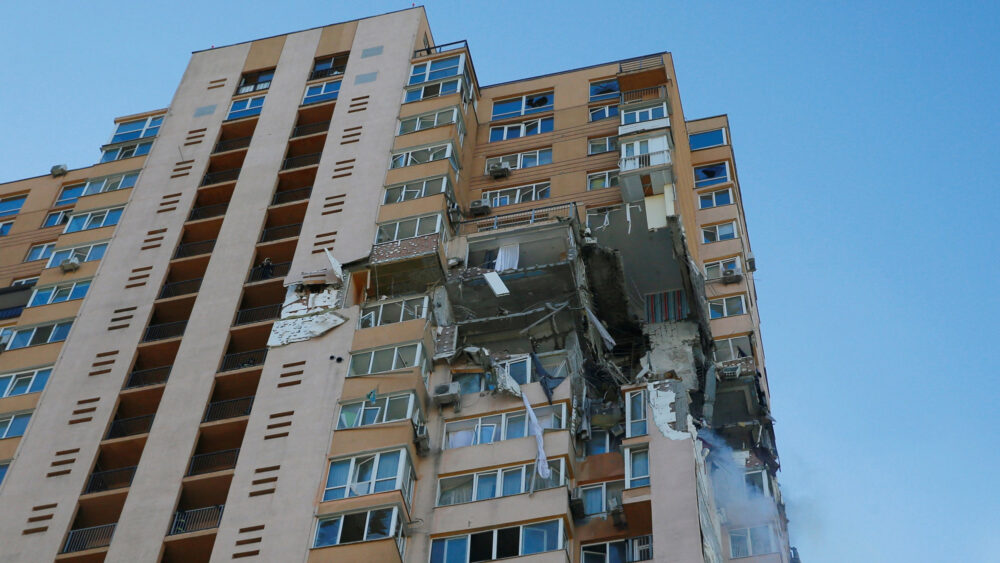
From CrimethInc.
As the Russian invasion of Ukraine proceeds, anarchists throughout Russia continue to mobilize in protest, joining thousands of other Russians. Here, we publish two statements from longtime Russian anarchist projects that offer some analysis of the situation in Russia and how the invasion of Ukraine might shift it.
Protests are scheduled in Russia for tomorrow (Sunday, February 27). We are still waiting for a report from our contacts in Ukraine, which we will publish when it arrives.
Russia itself has become an information battlefield in the course of the invasion. The Russian government has attempted to block access to Twitter so that Russians will not see what is happening in Ukraine or, for that matter, elsewhere in Russia. On the other side of the barricades, the Kremlin website was hacked. Whether the Russian people decide to support this invasion at great cost to themselves—or to oppose Putin’s agenda at great risk to themselves—may well determine what happens in Ukraine in the long run.
“Peace is a privilege reserved for those who can afford not to fight in the wars they create—in the eyes of madmen, we are just figures on a chart, we are just barriers in their path towards world domination.”
-Tragedy, “Eyes of Madness”
Solidarity actions continued today in Germany, Switzerland, and elsewhere around the world.
The following statement appeared yesterday on the Telegram channel of Militant Anarchist [Боец Анархист], a collective in Russia whose name we have previously translated as “Anarchist Fighter.”
Our position on the events taking place in Ukraine is clearly evident in our previous posts. However, we felt it necessary to express it explicitly, so that something would not be left unsaid.
We, the collective of Anarchist Fighter, are by no means fans of the Ukrainian state. We have repeatedly criticized it and supported opposition to it in the past, and we have also been the cause of large-scale repression against the VirtualSim operator, done by the Ukrainian security services in an attempt to fight us.1
And we will definitely return to this policy in the future, when the threat of Russian conquest has receded. All states are concentration camps.
But what is happening now in Ukraine goes beyond this simple formula, and the principle that every anarchist should fight for the defeat of their country in war.
Because this is not simply a war between two roughly equal powers over the redistribution of capital’s spheres of influence, in which one could apply Eskobar’s axiom.2
What is happening in Ukraine now is an act of imperialist aggression: an aggression that, if successful, will lead to a decline in freedom everywhere—in Ukraine, in Russia, and possibly in other countries as well. And it will also increase the likelihood that the war will continue and escalate into a global war.
Why this is the case in Ukraine is obvious, as far as we are concerned. But in Russia, a small victorious war (as well as external sanctions) will give the regime what it currently lacks. It will give them carte blanche for any action, due to the patriotic upsurge that will take place among part of the population. And they will be able to blame any economic problems on sanctions and war.
The defeat of Russia, in the current situation, will increase the likelihood of people waking up, the same way that occurred in 1905 [when Russia’s military defeat by Japan led to an uprising in Russia], or in 1917 [when Russia’s problems in the First World War led to the Russian Revolution]—opening their eyes to what is happening in the country.
As for Ukraine, its victory will also pave the way for the strengthening of grassroots democracy—after all, if it is achieved, it will be only through popular self-organization, mutual assistance, and collective resistance. These should be the answer to the challenges that war throws at society.
Furthermore, the structures created for this grassroots self-organization will not go anywhere once the war is over.
Of course, victory will not solve the problems of Ukrainian society—they will have to be solved by taking advantage of the opportunities that will open for the consolidation of society in the instability of the regime that comes after such upheavals. However, defeat will not only fail to solve them—it will exacerbate them many times over.
Though all these are all important reasons for our decision to support Ukraine in this conflict—let’s call them geopolitical reasons. But they are not even the primary reasons. The most important reasons are internal moral ones: because the simple truth is that Russia is the aggressor, that it pursues an openly fascist policy. It calls war peace. Russia lies and kills.
Because of its aggressive actions, people are dying and suffering on both sides of the conflict. Yes, even those soldiers who are now being driven into the meat grinder of war (not counting those bastards for whom “war is mother nature,” who, in our opinion, are hardly people at all). And this will continue until it is stopped.
Therefore, we urge everyone who reads this, who is not unfeeling—to show solidarity with the Ukrainian people (not the state!!!) and support their struggle for freedom against Putin’s tyranny.
It falls to us to live in historic times. Let’s make this page of history not a shameful one, but one we can be proud of.
Freedom to the peoples of the world! Peace to the people of Ukraine! No to Putin’s aggression! No to war!

The following text appeared today as a podcast in Russian on the Autonomous Action website.
On Thursday morning, Putin launched the biggest war in Europe since World War II. He hides behind the alleged interests of the separatist part of Donbas. Although the DPR and LPR were absolutely satisfied with the recognition of their statehood, the official entry of the Russian army and the promised one and a half trillion rubles. Recall that for many months, the cost of rent and food prices in Russia itself have been growing day by day.
The Kremlin has made absurd demands of the Kiev authorities—let’s start with “denazification.” It is true that, thanks to their active participation in the Maidan protests of 2014, the Ukrainian ultra-right has secured an outsize position in politics and law enforcement agencies. But in all the elections in Ukraine since 2014, they have won no more than a few percent points of the vote. The President of Ukraine is Jewish. The problem of the Ukrainian ultra-right must be solved, but it cannot be solved with Russian tanks. The Kremlin’s other charges against Ukraine—about corruption, election manipulation, and dishonest courts—would be far more appropriate for the Kremlin to press against itself. Now, Russian troops are, in the full sense of the word, occupiers in a foreign land—no matter how this contradicts the expectations of everyone who grew up on stories about the Great Patriotic War.
Russia has found itself in international isolation. [Turkish President Recep Tayyip] Erdoğan, [General Secretary of the Chinese Communist Party] Xi Jinping, and even the Taliban are asking Putin to stop hostilities. Europe and the United States impose new sanctions against Russia every day.
As we prepare this text, the third day of the war is coming. The Russian army has a clear superiority over the Ukrainian one, but the war does not seem to be going exactly according to Putin’s plan. Apparently, he counted on victory in one or two days with little or no resistance, but there has been serious fighting throughout the territory of Ukraine.
Russians and the whole world are now watching videos showing shells hitting residential buildings, an armored car running over a senior citizen, corpses and shooting.
Roskomnadzor [the Russian government’s Federal Service for Supervision of Communications, Information Technology, and Mass Media] is still trying to threaten the entire Internet, demanding “Don’t call this a war, but a special operation.” But few people take them seriously anymore. As long as the Internet in Russia is not turned off completely, there will be enough sources of information. Just in case, once again, we recommend setting up Tor with bridges, VPN, and Psiphon in advance.
The effects of the sanctions and the war are just beginning to be felt by Russians: Most of Moscow’s ATMs were out of paper money on Friday. Why? Because the day before, people took 111 billion rubles from banks: in fact, all their savings. The real estate market collapsed, and the construction of residential buildings is the most important branch of the Russian economy. The foreign automotive industry is gradually ceasing to ship cars to Russia. The exchange rates of the dollar and the euro are artificially constrained by the Central Bank. Shares of all Russian companies fell severely. Everyone understands that it will only get worse.

The Russian reaction to the war in Ukraine is completely different from what happened here in 2014 [when Russia seized Crimea after the Ukrainian revolution]. Many people, including celebrities who worked for the government, are demanding an immediate end to the war. The removal of Ivan Urgant, the leading Russian TV star, from the air is noteworthy.
The vast majority of those who still support Putin are also against the war. The average Putin supporter just now thinks that everything has been calculated, the war will not drag on for long, the Russian economy will survive. Because yes, it’s not easy to live with the understanding that your country is ruled by a deranged person—by Don Quixote with a million-strong army, one of the strongest in the world, Don Quixote with a nuclear weapon capable of destroying all of humanity. It is difficult to realize that, having read second-rate political scientists and philosophers, one can bomb a neighboring fraternal country and destroy one’s own economy.
Reveling in unlimited power, Putin has gradually moved away from reality: there are the stories about two-week quarantines for ordinary mortals who need to meet with the Russian president for some reason, and tables of gigantic length at which Putin receives both his ministers and heads of other states.
Putin has always been a politician who balances the interests of security forces and oligarchs. Now the president has stepped out of this role, having gone on an independent voyage through the boundless sea of senility. We are ready to bet a bottle of the best whiskey that in the near future, Mr. President might experience a coup from his own inner circle.
Russia may meet the year 2023 with some other system of power and a different character in the Kremlin. What it will be is unknown. But for now, it is the dusk before dawn.
In the meantime, protests against the war are taking place in Russia. Anarchists participate in them in Moscow, St. Petersburg, Kazan, Perm, Irkutsk, Yekaterinburg and other cities. In Russia, it is extremely difficult to organize street protests; this is fraught with administrative and criminal terms, not to mention good old-fashioned police violence. But people are coming out all the same. Thousands have already been detained, but the protests continue. Russia is against this war and against Putin! Come out—when and where you see fit. Team up with friends and like-minded people. Social networks are suggesting Sunday at 4 p.m. as the time for a general protest action. This day and hour is no worse than any other. Download anti-war leaflets for distribution and posting from our website and social networks!

Meanwhile, Ukrainian anarchists are joining in the territorial defense of their cities. It is now harder for them than for people in Russia, but this is one and the same defense. This is the defense of freedom against dictatorship, of will against bondage, of normal people against deranged presidents.
If Putin suddenly comes to his senses by some miracle, and the war ends one of these days, are we ready to “return to our sheep,” as the French say? It is likely that we will be kicked out of the Council of Europe. Thus, Russians will lose the opportunity to apply to the European Court of Human Rights, and soon the Kremlin will restore the death penalty.
For now, we will return to the news in the spirit of all recent years: right now, the State Duma [a legislative body in the ruling assembly of Russia] is adopting a law according to which a military conscript must himself come to the military enlistment office rather than waiting for a summons. Putin also recently raised the salaries of the police. And the prosecutor’s office, in an appeal, demands to increase the term of an anarchist from Kansk, Nikita Uvarov, convicted in the famous “Minecraft terrorism case,” from five to nine years.
You yourself know what to do with all this.
Freedom for the peoples! Death to empires!

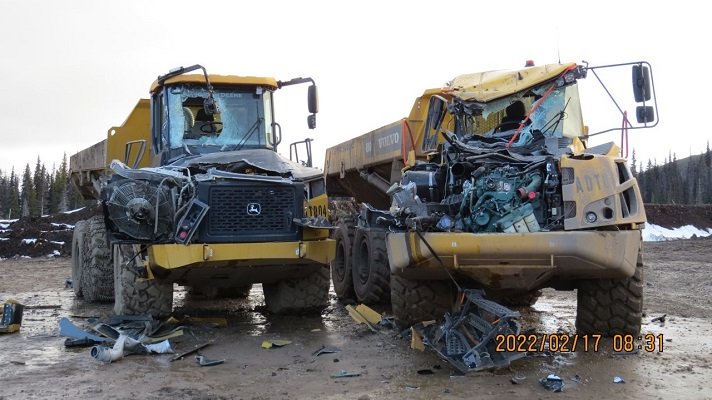
From Gord Hill
What appears to be a highly effective act of sabotage carried out by Indigenous land defenders: cue the conspiracy theorists…
And some aren’t even theorizing, they assert it as fact: it was the cops, it was CGL… Here’s a theory: the attack was carried out by Indigenous people who, in the cold dead of night, set out on a mission to sabotage the CGL pipeline.
They carried out an audacious and complex attack that I would imagine started with getting the security guards away from vehicles and buildings. At some point after the security guards had fled, blockades and counter-vehicle devices were put in place on the only road leading to the site, delaying police response probably by hours. In that time the warriors carried out millions of dollars in sabotage.
Considering all this, I think it’s important to acknowledge that this may just be what it appears to be: an attack carried out by Indigenous warriors.
I’ve seen people posting about a bomb attack the RCMP carried out in Alberta in the 1990s as proof of cops carrying out fake attacks. This bombing was part of the police investigation of Wiebo Ludwig and his campaign against the oil and gas industry. The action was intended to entrap Ludwig. With cooperation from the oil company, the police blew up an abandoned, unused shed. It was in no way a major act of sabotage, in contrast to what is now being reported in Wet’suwet’en territory. It was insignificant compared to the actual sabotage that was occurring and for which Ludwig was widely suspected… and for which there was a virtual media blackout by the oil companies and RCMP who did not want the practice of sabotage to spread.
One of the problems with this conspiracy mongering is that is undermines the effectiveness of this action. The more it spreads and festers the more people question if it was a genuine act of resistance or not. Who does this inspire? In whose interests are acts of Indigenous resistance diminished rather than promoted? I also believe this conspiracy mongering demoralizes those who carried out the action (and who are now being hunted by police).
Extraordinary claims require extraordinary evidence…
Anyway, that’s my theory…

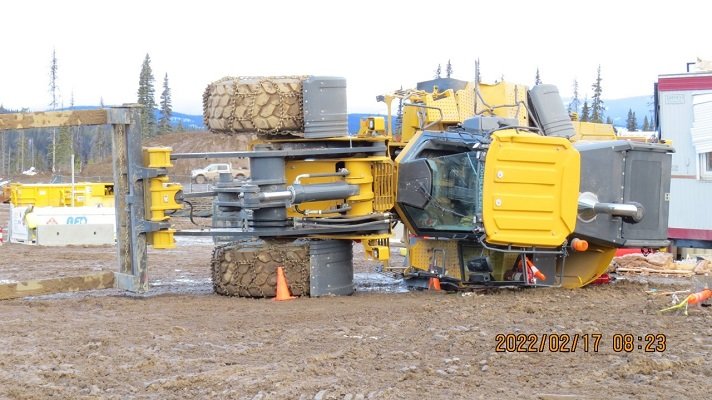
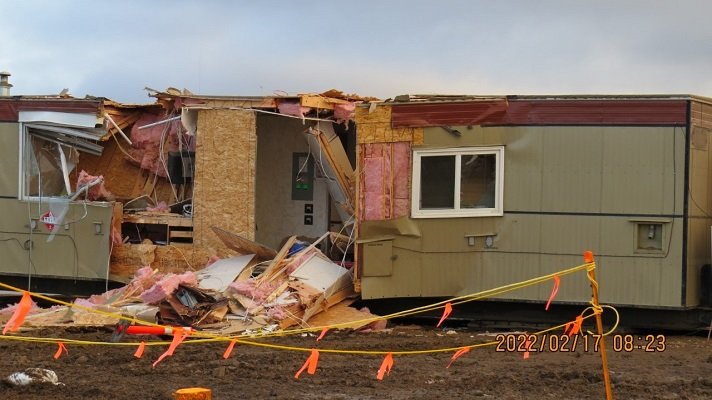

Anonymous submission to MTL Counter-info
We were more than 150 on Saturday morning gathered to oppose the far right, which is currently riding the wave of anger at health measures to advance its political agenda. Among the demonstrators we were confronted with, if the most widely waved flags were those of Canada, others were raising high flags of the Front canadien-français, a far-right ultra-nationalist collective with a Catholic heritage [note: we are told that the flag in question, the Carillon-Sacré-Coeur, is not the flag of the Front canadien-français. The flag dates from the early 20th century in Ultramontanist circles. The FCF was a small group created and dissolved in recent years that appropriated this flag, like various right-wing nationalists. –MTL CI]. The extreme right-wing populist of the People’s Party of Canada, Maxime Bernier, was also present.
The energy of the counter-demonstrators was very good, despite the sadness of the event. We chanted loudly for hours “A-Anti-Antifascists” and “Neither Trudeau nor covidiot, the solution is not fascist”. Our biggest victory was to deprive the demonstration of all its flag-wearing trucks and cars by blocking the exit to the parking lot. Even in a small, well-motivated group we are really capable of curtailing the movements led by the extreme right.
But let’s not kid ourselves. Despite the situation across Canada, millions in funding from obscure sources, and the spirit of the freedom convoy movement inspired by last year’s assault on Capitol Hill, the SPVM deployed at least as many fascists in police clothing as there were counter-demonstrators to surround us and block any attempt to move. In riot gear, many of them proudly wore “thin blue line” patches. Mixed with rage and sadness, we waited for a long time surrounded by riot cops once the demonstration had left their place of departure. It was pitiful to see so many riot cops putting us in cages without paying attention to the fachos gathering in our neighborhoods.
The situation is extremely worrying. As anti-fascists, we cannot allow the seed that is being sown to germinate. We must organize and multiply counter-demonstrations, let’s be on the lookout for what is being prepared in our neighborhoods. As an extremely well-funded fascist mobilization takes shape and is protected by cops with symbols that have a more than alarming background, putting forward antifascist perspectives in our struggles seems more than imperative.
Photo: André Querry

Anonymous submission to MTL Counter-info
On the night of February 6th, 2022 in Montreal (Tio’Tia:Ke), non-Indigenous allies demonstrated their solidarity with the Gidimt’en clan of the Wet’suwet’en Nation. The instigators of this action are responding to a call by Wet’suwet’en hereditary chiefs to #ShutdownCanada in response to the invasion of their territory, the Yintah, by the RCMP for the third consecutive year.
We used many different tactics : smashed windows, glued locks and card readers, and spray-painting #FuckRBC on the interior, so all RBC clients were aware of why their bank has been consistently targeted for the past 5 months.
The Wet’suwet’en people are currently resisting the construction of an oil pipeline by Coastal GasLink, a TransCanada Energy company – which is known in Canada for attempting to build the Energy East pipeline – on their traditional territory. Among other things, the construction of the pipeline puts the Wedzin Kwa River at risk, since the pipeline is planned to pass under it. This river serves as a source of water and fish, and is central to the traditional practices of the Wet’suwet’en people.
These were small and easy actions, and we encourage everyone to get together with their trusted friends and test out all the different ways we can fuck with RBC. Several solidarity actions have indeed taken place in different places across so-called Canada, in the last weeks. The call for solidarity actions is ongoing: “The Gidimt’en Clan invites you to organize demonstrations and actions in your region. It also calls to put pressure on governments, banks and investors […] to make a donation […] and to come to the camp.
Solidarity with all peoples who resist! No to Coastal GasLink!

Anonymous submission to MTL Counter-info
We are a group of young activists that have been active for only a few years. The experience of participating in different environmental organizations made us realize the limits of these organizations with respect to the effectiveness of our struggles. So in recent months, we decided that we wanted to try to inflict economic damage on fossil fuel companies through our actions. This decision led to much in the way of questions, preparation, reflections and ideas. These things are what we would like to discuss in this text.
It began with many of us acknowledging something: the environmental struggle has hit a wall. We repeat actions of the same intensity (whether we’re 20,000 or 500,000 in the streets) for a cause that is becoming radically more urgent. We complain that the government doesn’t listen, but we choose to stay in a passive position, always in a posture of making demands while more than enough evidence has accumulated to disillusion us. Wishing to be lucid about the effectiveness of our methods as much as what little room for manoeuvre we have left, we felt the necessity to do more and to do better. These reflections emerged as well following readings like “How to Sabotage a Pipeline” by Andreas Malm, texts on the history of the Earth First movement (“Down with Empire! Up with Spring!“), and written reflections from ZADs and from current environmentalist groups.
Some may tell us that these reflections needed to come sooner. They may be right. Still, it is absurd to ask an activist to move from inaction to the most radical form of action. Every activist accumulates experiences that lead them to reflect on the effectiveness of their actions. Each one of us may then evaluate what they can do, based on their desires and abilities.
So we started to think about what would be within reach for us and have a certain impact. The first obvious obstacle that presents itself is the law. We believe that right now, everyone must reflect on their capacity and will to break the law in order to have an impact. Accepting legal risk takes time, it’s a psychological process not to be ignored — being comfortable with the actions that follow all the more so. This taking of risks may throw into question some of our aspirations and make us face our privileges as well as what they may imply as responsibilities. Therefore we invite anyone with the will to intensify their political action to reflect on the legal risks they are ready to take. Ultimately, we see it as a necessity so as to have a greater impact. It’s a matter of finding a balance between risk and intended impact. We do not seek to get arrested “to get arrested” or in a perspective of civil disobedience with an audience. We no longer want to be in a position of making demands to those in power, we want to cause direct economic damage with the goal of forcing a prohibition of fossil fuels.
The second obstacle apparent is that of preparation. We weren’t prepared to take this kind of action, and information stays hidden (with reason). We had to delve into different sources ourselves to learn certain techniques, to have good legal protection, and to communicate with each other securely. All this preparation takes more time. However, if we wish to intensify our struggle, we must get off the beaten trail and try to learn on our own the best we can. Through this process, there will be experiments and mistakes, and we will not all become perfect activists overnight. This lack of preparation and knowledge must not be an impediment to the intensification of our actions, it only requires that we make the time to learn by ourselves and share our knowledge.
The third barrier that appears is that of our (in)experience related to our age and the network of who we know. We are part of a new generation of activists that was not around for some big dates of struggle in “Quebec”. This inexperience leads us to have less practice, but also less knowledge of activist structures and practices. This inexperience can also elicit distrust from older comrades who see us as naive or unable to act in view of an escalation of pressure tactics. This distrust has its reasons, but we still would have more to gain by uniting as much as possible and sharing knowledge that was erased with the dissolution of the ASSÉ and burnout. Not that we put aside the necessity of organizing in affinity groups to build trust and maintain security.
Lastly, the fourth barrier we face, one that we may feel inside us without sharing it, is an emotional barrier. Lowering your fears about actions you’re doing, facing confrontations with the police and their intimidation tactics (we recognize that for some people confronting the police is not a matter of choice), developing the courage needed to trust yourself on new paths that lie outside societal approval: all these things require emotional work that takes time, even more so as we may carry within us the image of the perfect revolutionary who is afraid of nothing, who fights the police without fear, maybe even with a smile, and we consider that it may be a question of nature. Whereas in our lives, we want to take care of each other, promote understanding of points of view and foster kindness, our organizing asks that we harden ourselves, face our fears, express our anger and take our legitimate place even if it means confronting the order of the world. This work on our nature and our emotions should be seen not as a barrier, but as an invitation to develop sharing circles to do this work together rather than alone. Ultimately, developing these qualities will allow us to live a life that is closer to our ideals and allow us to be happier.
Surmounting these barriers as much as possible, we carefully planned our action. The action aimed to damage gas stations in order to render them inoperable for several days. In the course of things, we had our challenges. One location ended up being surveilled, and another closed a few weeks before our action, rendering it useless. We nevertheless gained practical experience by which we faced our fears and learned lessons from our mistakes. It is necessary to begin acting, even if we are not perfect, even if we don’t know everything. What’s important is to organize as well as we can but above all to act, because all that stops us is essentially fear and a lack of time.
In conclusion, we believe it is necessary for the struggle to evolve toward a plurality of direct actions. Our goal in this text is to share that it is not necessary to know everything, that it’s normal for many obstacles to appear along the way, and that we can all autonomously gain the knowledge and reflections needed towards this end. Ecological struggles will mark the coming years. They are struggles that we have no choice but to win. We would like for the next people who organize in the context of the ecological crisis to not take the typical peaceful path. We also want to call for activists from previous generations to share their knowledge with us so that we can move forward together. However, we do not overlook the impact that repression had on some of our friends. We recognize the courage of the people who were or are in any way a part of struggles past and present.
-History is watching